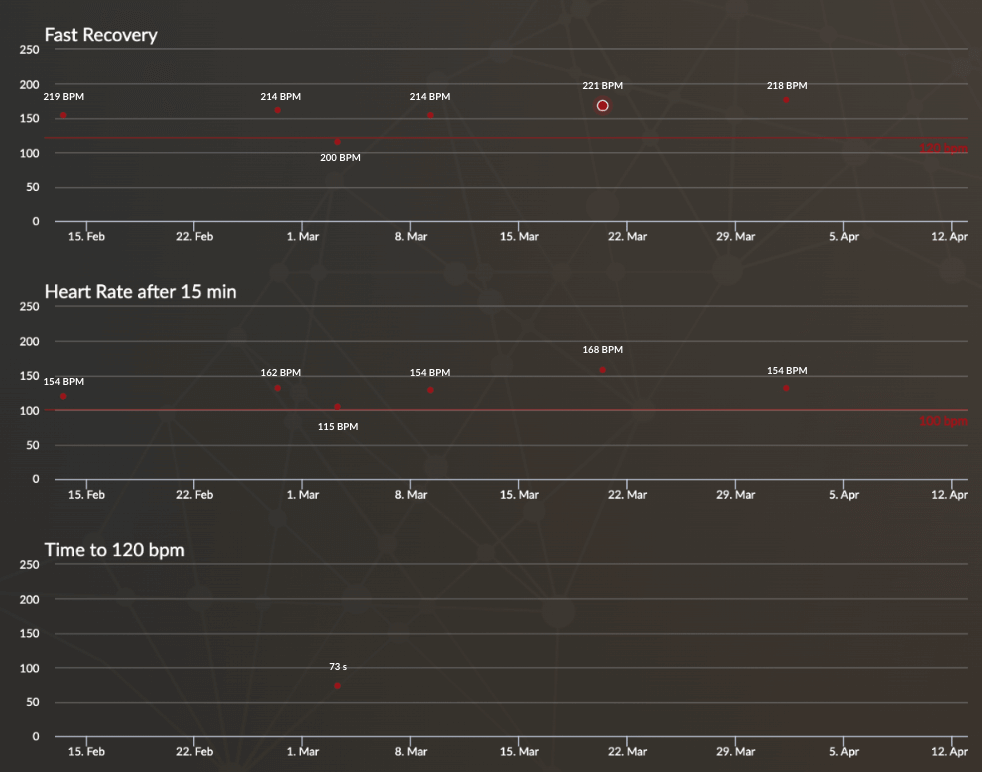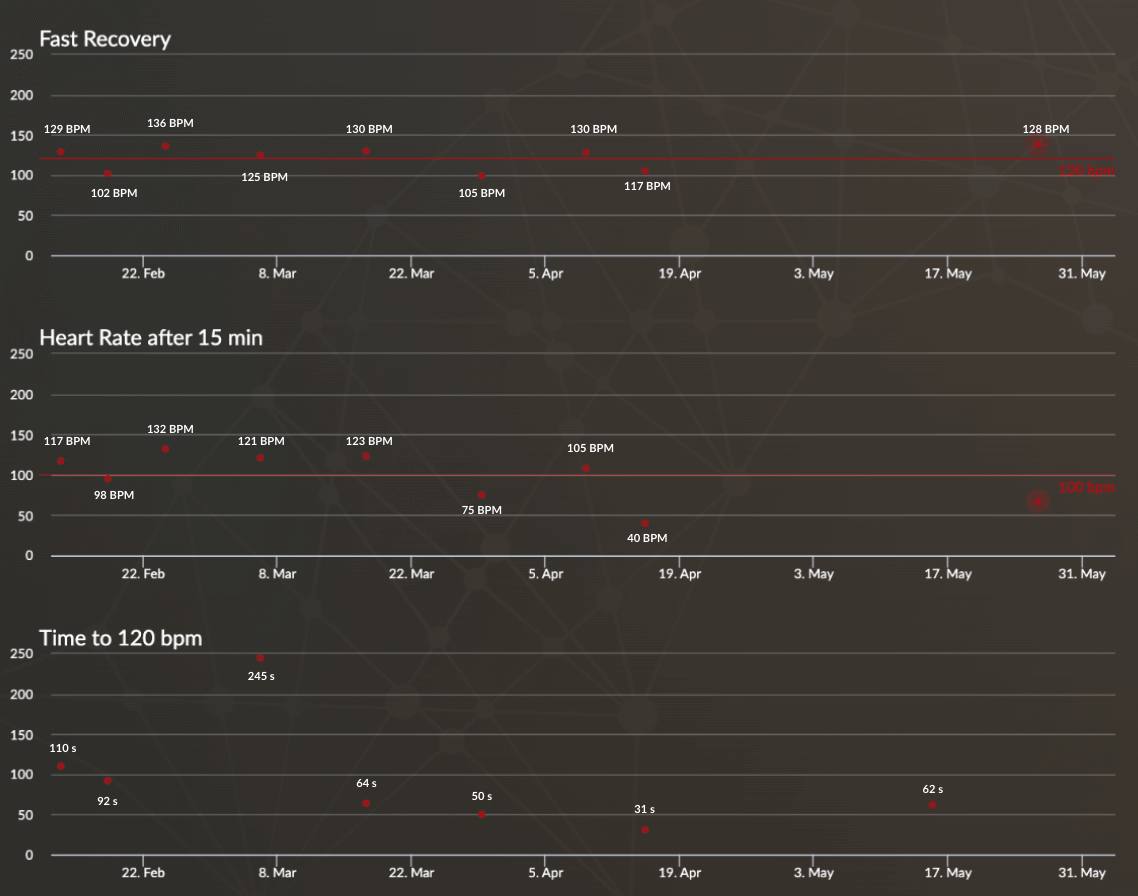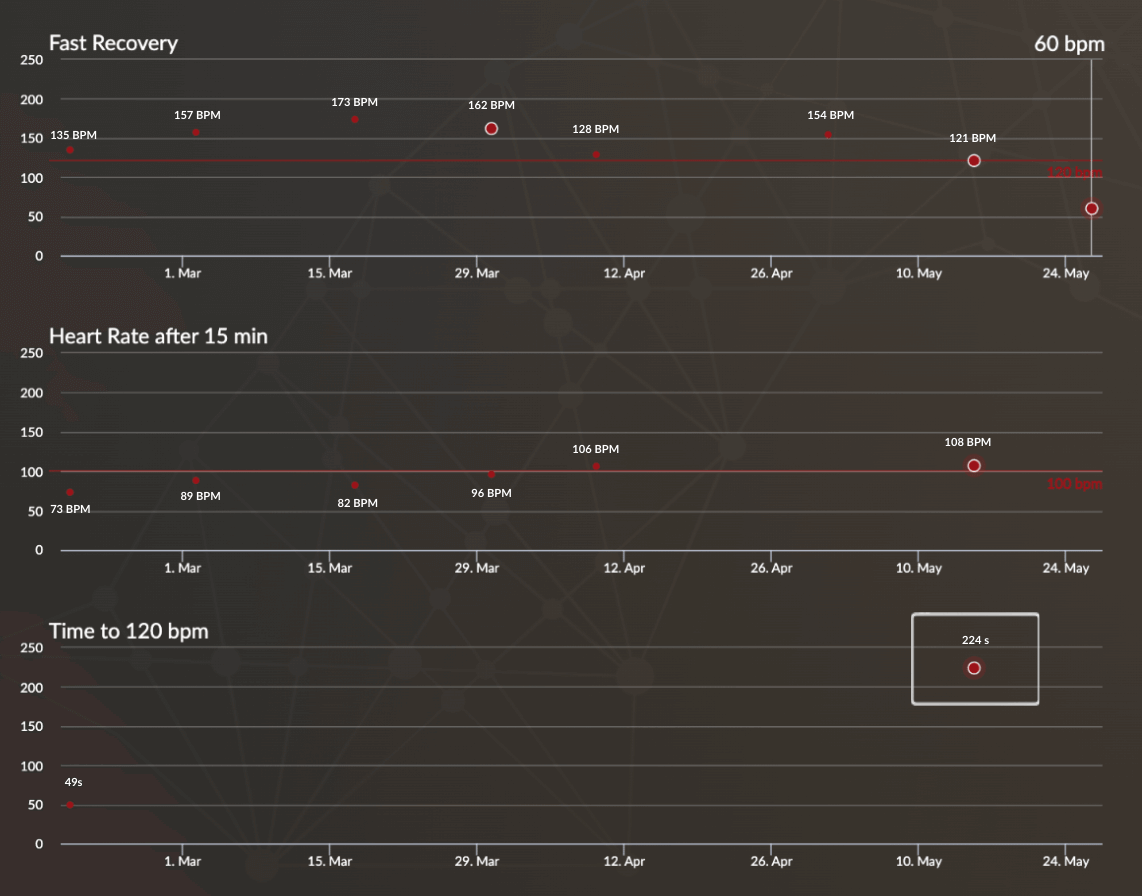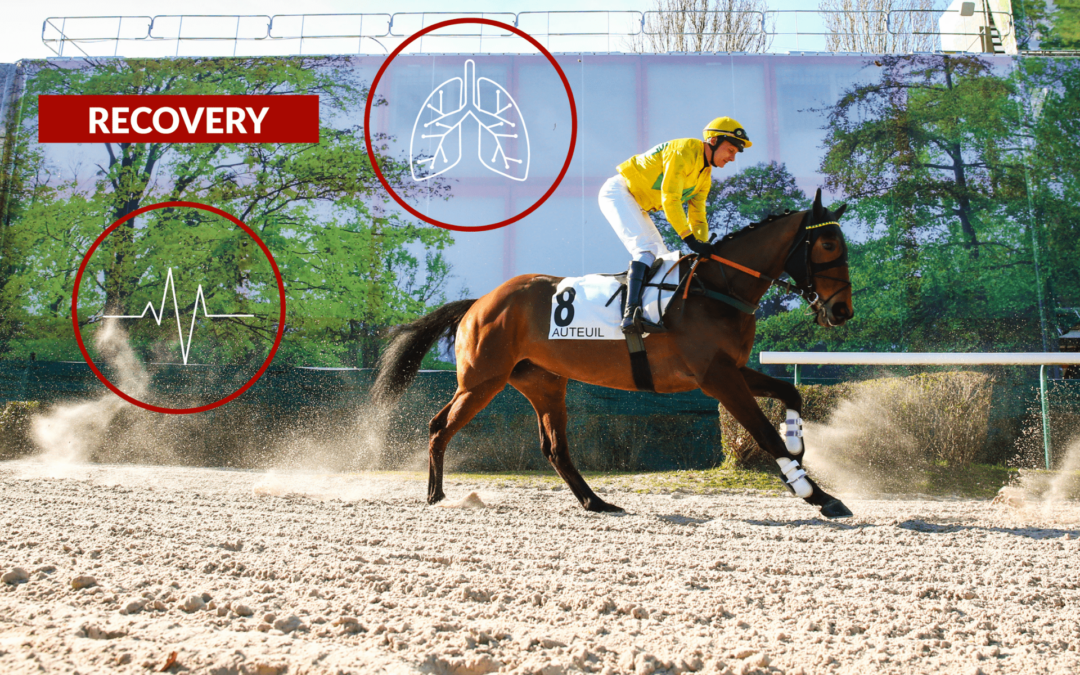Young racehorses do not have the same recovery patterns as older horses, even for equal intensity training and even between two horses with similar fitness. Young horses’ hearts are less efficient, and they must adapt their muscular and neurological systems to training environments. They require time to adjust to training before they can fully recover. As a result, evaluating the recovery of juvenile racehorses should be done differently.
How recovery parameters differ with young horses as opposed to fully mature horses?
1. The young racehorses’ recovery mechanisms
Young racehorses’ hearts are initially less efficient. Even though the cardiovascular system can adapt to intensive training in six weeks, their muscular and neurological systems need more time to assimilate the training conditions (intense work, rider on the back, high cadence…). Young racehorses therefore need time to adapt to training before they can recover properly.
Most of the time, young horses have very high heart rates both during exercise and during recovery. The analysis of recovery after exercise or after 15 minutes is therefore not the most relevant data to evaluate the effort or the intensity of a young horse’s training. This parameter also does not necessarily reflect the adaptation or progress of the horse.
Young horses often show surprising data. It is important to take a step back when analyzing their data. They are in new environments and discovering new things, so they are more easily excited. It is important to establish a routine and expose them to different external elements (cars, noises, people…) before drawing hasty conclusions.
2. Recovery data for young racehorses
In order to assess young racehorses’ effort, an other parameter seems relevant : the time required for the heart rate to drop to 120 BPM. This variable is an interesting fitness and recovery indicator, even more interesting as it applies to all horses, regardless of their maximal heart rate.
Example – Arion I
On this example, we can see that fast recovery has not been achieved : in fact, this young horse’s heart rate does not go below the average level. However, further down, we find the time needed to get his heart rate back down to 120 BPM which is also a recovery indicator. This gives an indication of time, unlike rapid recovery which is measured in BPM after the effort.

Data from the EQUIMETRE platform
Thus, the time to 55% of max HR is a recovery parameter that may be interesting to look at in young racehorses.
Example – Arion II
In the example below, Arion II is a horse with a very low maximum heart rate of 210 BPM. We can see that the fast recovery data don’t vary much between trainings. However, when we look at the time to 55% of max HR, we can see that the data fluctuates much more. In fact, it took 245 seconds to recover for the high intensity training on March 8, and much less time for the following trainings

Data from the EQUIMETRE platform
Thus, the time to 55% of max HR better shows the work intensity and the young horse’s fitness than heart rate.
Example – Arion III
This horse did one last training before going to breeze up: this training’s data are framed on the picture. We can see that the time to 55% of max HR was very long and we can deduce that the training was quite stressful for him. On the other hand, if we look at the recovery data and compare it with his other trainings, they remain around average and the post-exercise heart rate is not significantly higher than during his previous trainings.

Data from the EQUIMETRE platform
Thus, recovery variations are much more detectable through time to 55% of max HR than through heart rate data in young racehorses.
Conclusion
Fast recovery and heart rate after 15 minutes are not very relevant measures in young racehorses. Indeed, during their first weeks of training, they are confronted with new things: the environment, the new routine, the weight of the rider, but also the adaptation of their stride (in stride frequency and stride length). Fast recovery and heart rate after 15 minutes, measured in BPM and not in time, are therefore influnced by the young horse’s environment. The analysis of the time to 55% of max HR is therefore more consistent in order to assess their fitness.
Keywords: young racehorses’ recovery, heart rate, fast recovery, time to 55% of max HR



